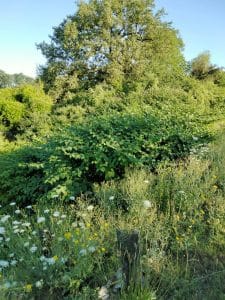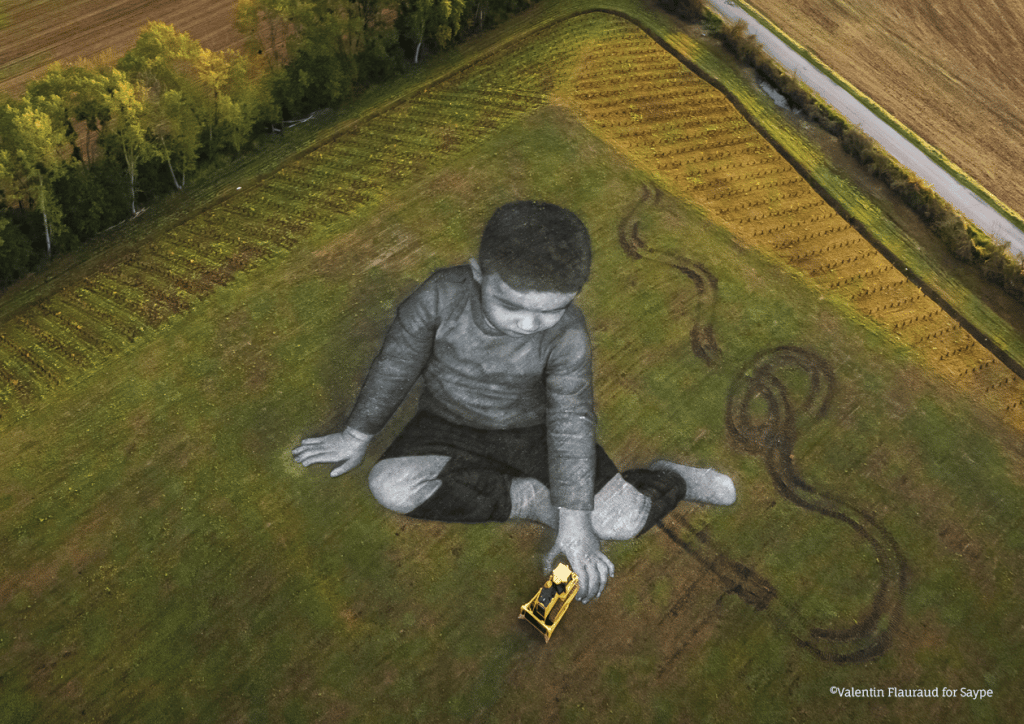How do you fill in your chronological register and transmit it to the Trackdéchets platform (RNDTS) ?
What is the purpose of these registers ?
The AGEC law and its decrees have strengthened the traceability provisions for excavated soil, given its legal status as “waste”. The aim is threefold :
– Improve knowledge of these deposits,
– take better account of them in the circular economy,
– prevent environmental damage.
What are the new obligations ?
Since January 1, 2022, the companies concerned have been obliged to keep a chronological register.
Chronological registers must be kept for a period of 3 years.
Data from the chronological register must be fed into Trackdéchets (RNDTS).
Find out more about the chronological register
Who’s concerned ?
- Land producers
- Land brokers / traders
- Land shippers
- Land transporters
- Operators of soil treatment and reclamation facilities
Obligations relating to keeping a chronological register
Keeping a chronological register is mandatory under the terms of article R. 451-43 of the French Environment Code.
Data relating to excavation, transport and soil reception operations must be filled in on an ongoing basis.
Registers must be kept for 3 years.
Penalties for non-compliance
Failure to keep the register, or refusal to make it available, is a criminal offence. Each breach is punishable by a fine of up to €750 (article 111-13 of the French Penal Code), as provided for 4th-class offences. In the event of a repeat offence or failure to comply, the criminal penalty can extend to up to 2 years’ imprisonment and a €75,000 fine.
What information must be included in the chronological register ?
- Nature of waste, waste codes,
- Dates of collection, transport and receipt,
- Origin, transport, destination and type of soil treatment
Find out more about Trackdéchets, the unique platform dedicated to soil traceability
Who’s concerned ?
- Land producers
- Operators of soil treatment and reclamation facilities
Obligations related to transmission to the Trackdéchets platform (RNDTS) :
The declaration on Trackdéchets is made online :
Electronic data must be transmitted no later than the last day of the month following shipment, receipt, or processing. Data must be updated systematically whenever necessary.
Penalties for non-compliance
In the event of non-compliance, producers and operators are liable to criminal penalties. Each violation may be punished by the fine provided for fourth-class offenses, namely a maximum of €750 (Article 111-13 of the Criminal Code).
In the event of a repeat offense or failure to comply, the criminal penalty may be extended to up to two years’ imprisonment and a fine of €75,000.
Other questions
Creating a diversity of environments in a development project means offering a mosaic of habitats favorable to biodiversity, while adapting to the ecological characteristics of the soil and the area. Here are a few examples:
Grasslands are formed gradually: first occupied by annual plants, they evolve towards biennial and then perennial species, until they form a herbaceous carpet of varying heights, depending on the richness of the soil. These meadows require regular maintenance – grazing or mowing – to maintain themselves, in the absence of large herbivores.
Finally, wetlands are essential to ecological balance. They are home to specific flora and fauna, but also play a fundamental role in water management: they filter, store and release water, while cooling the air locally. At a time when urbanization is tending to wipe them out, their preservation is essential to the resilience of our territories.
Forest edges act as ecological corridors. This transition zone between open and forested environments, if richly structured with shrub vegetation, provides shelter, food and lodging for many species.
Although man-made, orchards represent an original habitat. As they age, fruit trees develop cavities that are ideal nesting sites for many species, including chickadees, hoopoes and owls. They can also be home to local or rare varieties, enhancing the richness of their flora.
Steppes, on the other hand, are poor, open environments with sparse vegetation and stony soil. Although not very productive from an agricultural point of view, they nevertheless offer an ideal refuge for specific species, such as the Common Buzzard. For example, in the north of the Seine-et-Marne region, ECT has created a 1.2-hectare steppe to provide a breeding and safety environment for a pair of Common Oedicnema that had been disturbed by roadworks.
Fertile substrate is a material used to promote plant growth thanks to its richness in nutrients and its ability to provide favorable conditions for root development. It can be natural or artificially created to meet the specific needs of plants in different contexts, such as agriculture, gardening or landscaping projects.
The fertile substrate manufactured by ECT is an eco-responsible alternative to the use of natural topsoil, a precious resource that it is essential to preserve. Produced locally on ECT sites, it meets the challenges of the circular economy by recovering inert soil from the construction industry and compost from green waste.
Main features :
- Preservation of natural resources: Limits importation and use of topsoil.
- Reduced carbon footprint: on-site manufacturing for green and agricultural landscaping.
- Recycling: Use of local materials (inert earth and green compost) with strict control of analysis and traceability standards (NF U 44-551).
- Versatility: Suitable for a variety of uses, including renaturation, afforestation, meadows and even roofing substrates.
ECT’s excavated soil management and reclamation sites are likely to accept materials excavated during the construction of SGP’s Grand Paris Express project, depending on the compatibility between the physico-chemical characterization of the materials and the type of soil authorized on our various sites. With regard to Grand Paris Express soil, a distinction must be made between station excavation soil and tunnel boring machine “sailings”, which require different on-site processing methods.
This is a systematic assessment designed to identify, evaluate and map invasive species present on a construction site. It generally recommends special measures for the treatment and disposal of plants and soil. EVEEs are plant species that have been deliberately or accidentally introduced outside their natural range. Their dissemination is one of the
5 causes of biodiversity collapse.
Invasive alien plant species (IAS) can have a detrimental effect on construction sites, causing delays, additional costs and safety risks. It is therefore important for construction companies to implement measures to manage and control invasive species in order to minimize their impact.
- Alteration of the construction environment: EVEEs can colonize construction zones, hindering construction and development activities. Their rapid growth can disrupt soils, structures and foundations intended for construction.
- Additional costs: The presence of EVEEs can lead to additional costs for construction projects, particularly in terms of the time and resources required to remove these plants, restore disturbed areas or reinforce protection measures.
- Safety risks: Some EVEEs can pose a safety risk to workers on construction sites. For example, fast-growing invasive plants can make surfaces slippery, increasing the risk of falls and accidents.
- Damage to equipment and infrastructure: EVEE roots can damage drainage systems, underground pipes, foundations and other infrastructure, leading to costly repairs and longer construction projects.
- Risk of propagation: Construction sites can act as dispersal vectors for EVEE. Machines, vehicles and construction materials can transport seeds and plant parts from one site to another, encouraging the spread of these invasive species to new habitats.
Invasive Alien Plant Species (IAS) are one of the five causes of biodiversity loss. As a company committed to the OFB, ECT has a triple objective:
- the reduction of their proliferation on its sites
- limiting their spread from customer sites
- the creation of a dedicated offer for the management of construction site soil impacted by EVEEs
ECT has created a booklet to help you identify, learn about, combat and eradicate these species. This guide provides recommendations for each invasive plant:
- Japanese wild buckwheat
- The Butterfly Tree
- Giant Hogweed
- Galéga Officinal
- Ambrosia
- Himalayan Balsam
- The thorny apple
- The American Grape
- Herbs of the Pampa
It is important for site managers to regularly monitor the presence of EVEEs and implement appropriate control measures to limit their spread and impact. Here are the 7 best practices:
- INFORMING OUR CUSTOMERS
and transporters of the risk of inputs into the soil and dissemination on our sites. - MAPPING
impacted areas to measure their evolution. - EVALUATE
the type of intervention to be carried out depending on the plants and their location on the site. - WATCH
regularly to identify the presence of invasive plants. - DELIMIT
to avoid them on foot or with construction equipment. - COMMUNICATE
on our practices and results, with internal and external feedback. - LUTTER
Neutralize invasive exotic plant species by carefully uprooting them or burying them at the bottom of a bin.
Contain invasive exotic plant species by surrounding them with more competitive plants.
Temporarily revegetate bare soil with ground cover seedlings to render it unattractive.
An invasive alien plant species is a plant that is introduced into a new environment where it is not native, and which proliferates aggressively, causing ecological, economic or social damage. These plants may have been deliberately introduced for horticulture, agriculture or other uses, or may have arrived accidentally via international trade, transport or other human activities.
Once established in their new habitat, invasive alien plant species often have a competitive advantage over native species. They can spread rapidly, crowd out native vegetation, disrupt natural ecosystems, reduce biodiversity, alter natural nutrient and water cycles, disrupt ecosystem services and even threaten endangered species.
Controlling invasive alien plant species is a major challenge for biodiversity conservation and ecosystem management in many parts of the world. Prevention, control and eradication measures are often necessary to limit their spread and minimize their harmful impact.

On Sunday September 24, 2023, the ECT site in Villeneuve-sous-Dammartin (77) exceptionally opened its doors for an outdoor escape game. An opportunity for the public to discover the land art work, “L’Œil du Ciel”, designed by Antoine Grumbach and produced by ECT. Earthworks and planting of the second Eye are scheduled for 2025. The site will open its doors to the public at the end of the excavated soil reclamation operation in 2027.
The artist Saype has taken up residence in Annet-sur-Marne (77), on a site rehabilitated by ECT, to create his new lad art work. This ephemeral, eco-responsible fresco entitled “Un jeu d’enfant?” was painted in 3 days using pigments derived from excavated soil. This fresco is no longer visible: it has faded naturally with the weather and the regrowth of ground vegetation. A sign has been installed on the site to commemorate this emblematic achievement.
